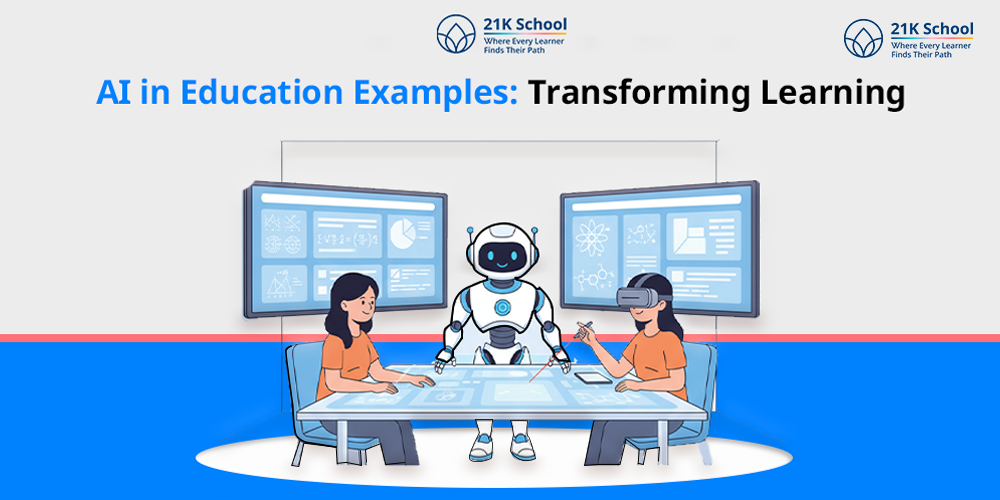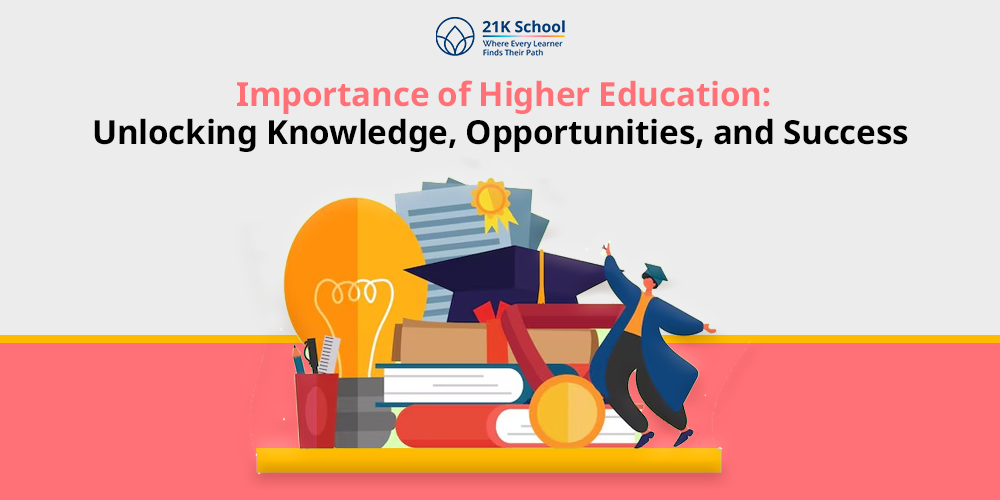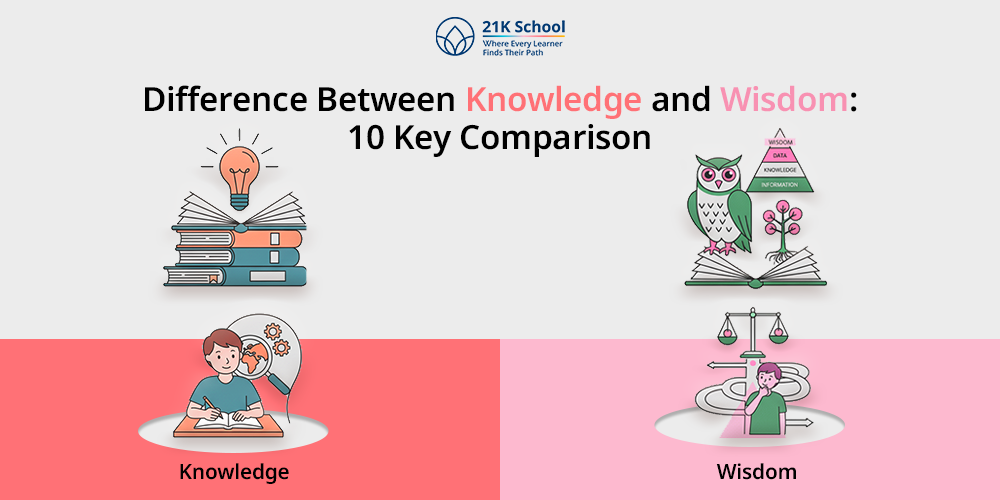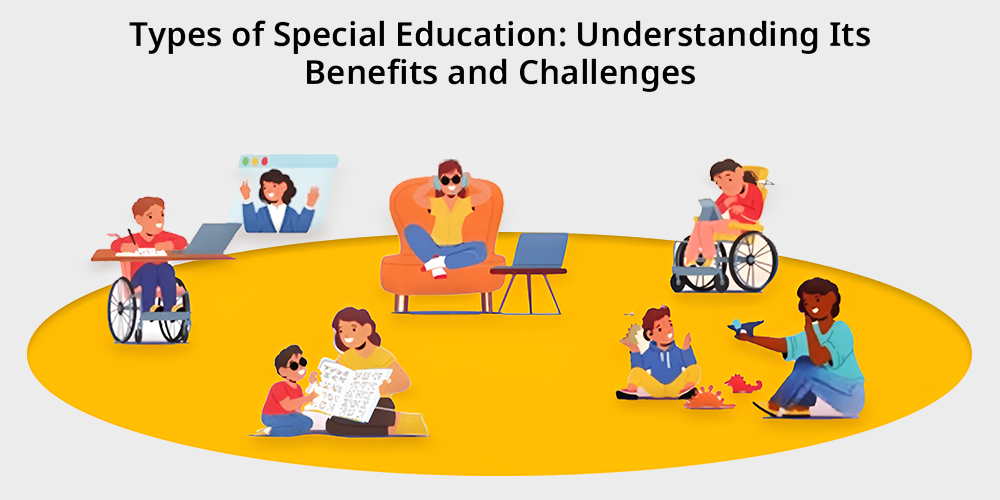
Do you know how special education helps physically challenged students?
Special education is very essential to meet the demanding needs of students. The main aim of special education is to provide students with equal learning opportunities and create an inclusive learning environment.
Special education is for children who have some disabilities or have issues with their physical health. The goal of physical education is to provide equal education to students who are facing physical challenges, such as learning disabilities, dyslexia, physical disabilities, and so on.
Special education provides support and guidance to students with physical disabilities, which helps in enhancing children’s confidence and attention. By using interactive and creative teaching methods, educators can promote a positive learning environment.
This also allows students’ cognitive development and boosts creative thinking skills.
Contents
- What is Special Education?
- What are the Types of Special Education?
- 1. Learning Disabilities
- 2. Autism Spectrum Disorder
- 3. Hearing Impairment
- 4. Visual Impairment
- 5. Deaf Blindness
- 6. Social Disorder
- 7. Emotional Disturbance
- 8. Intellectual Disability
- 9. Multiple Disability
- 10. Language Disorder
- 11. Development Delay
- 12. Orthopaedic Impairment
- 13. Noncategorical Early Childhood
- Benefits of Special Education
- Challenges of Implementing Special Education with Solutions
- Final Thoughts
What is Special Education?
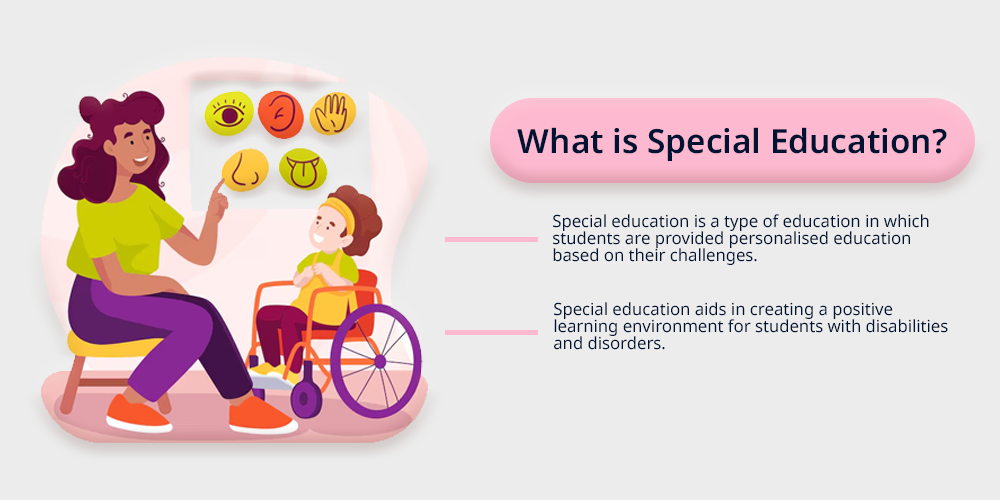
Special education is a type of education in which students are provided personalised education based on their challenges. It is a process of providing tailored instruction to meet the demanding needs of students with disabilities.
Special education aids in creating a positive learning environment for students with disabilities and disorders. Due to physical disabilities, students are unable to learn at the same speed, which causes hindrances to their learning efficiency.
Special education in India was first introduced in the year 1880 as a distinct system for disabled children. The first special education school for deaf students was established in 1882 in Bombay (Mumbai).
However, government schemes such as Integrated Education for Disabled Children and Project Integrated Education for the Disabled were set up in 1974 and 1987 by the Government of India to support special education in India.
What are the Types of Special Education?
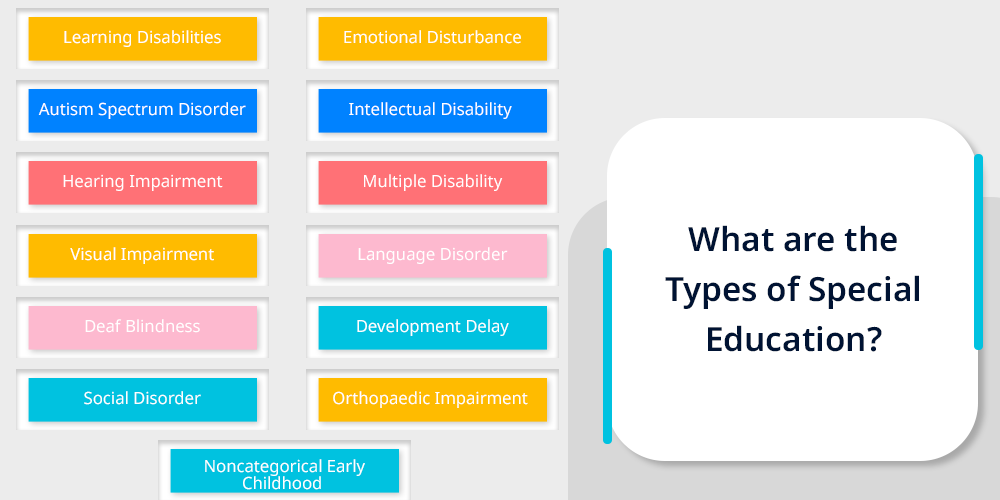
Special education has various types that provide students with individualised education.
Every physically challenged student has different types of disabilities and disorders, such as learning disabilities, physical disabilities, dyslexia, autism spectrum disorder, intellectual disorders and so on.
Every disability requires individualised education as per the needs of students’ challenges and their preferences.
A proper educational strategy for disabled children helps in promoting dynamic education as well. Here you can check the types of special education mentioned below.
1. Learning Disabilities
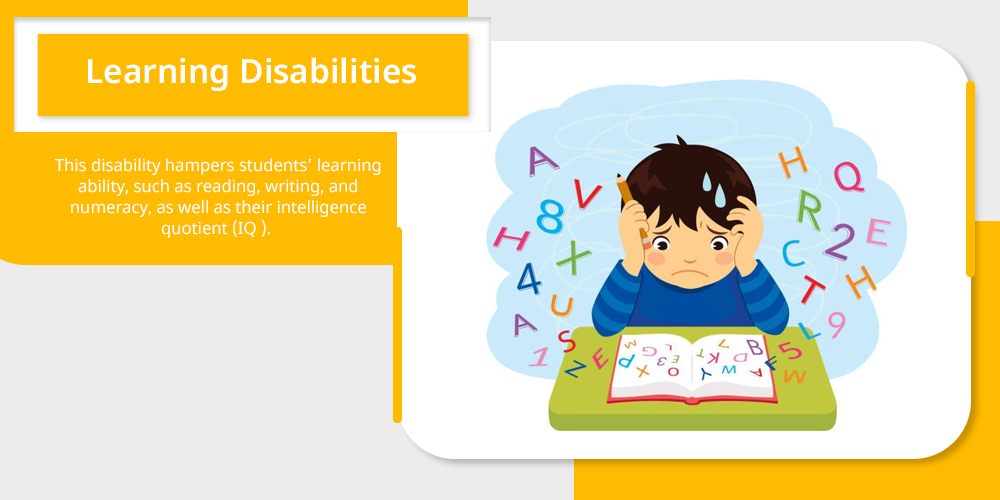
It is a type of disability in which students find it difficult to learn any concepts. This disability hampers students’ learning ability, such as reading, writing, and numeracy, as well as their intelligence quotient (IQ ).
Due to this issue, students find it difficult to engage in class activities and are unable to grasp any concepts effectively, nor can they memorise any concept for a longer period of time.
2. Autism Spectrum Disorder
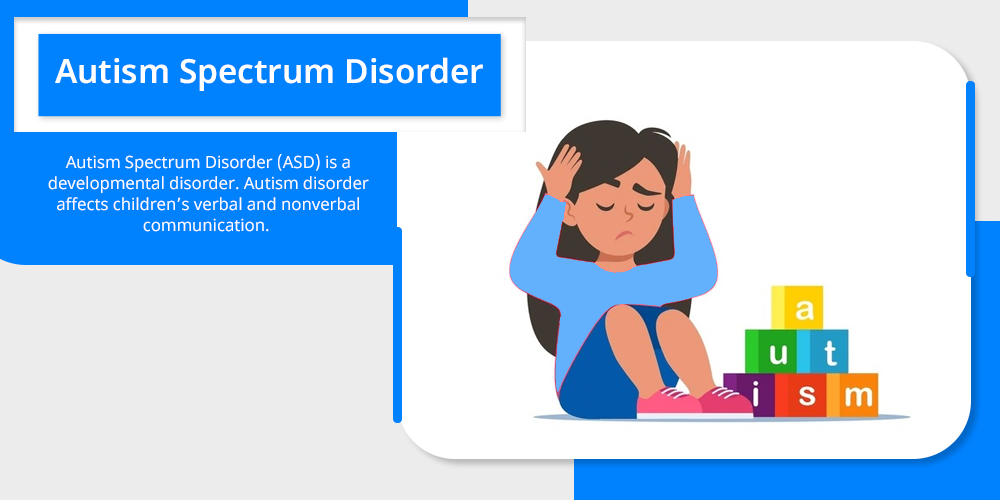
Autism Spectrum Disorder (ASD) is a developmental disorder. Autism disorder affects children’s verbal and nonverbal communication.
Basically, the symptoms of the disorder can be seen before the age of 3, which causes students to perform poorly in academics and in their daily life in communicating with others. In some cases, students become resistant and unresponsive, which hinders their mobility.
3. Hearing Impairment
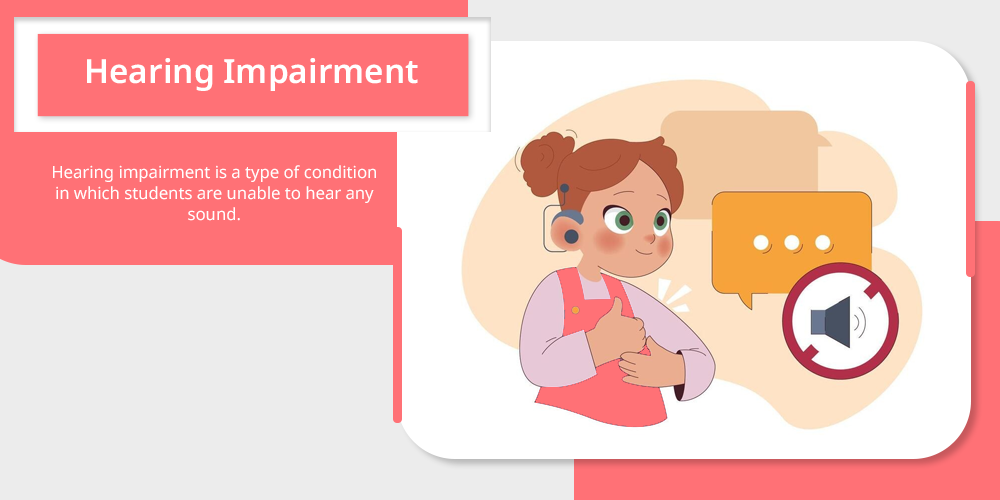
Hearing impairment is a type of condition in which students are unable to hear any sound. This condition impacts linguistic processes and causes them to be unable to communicate with others.
Many children with such disabilities have permanent problems or fluctuating hearing aids. Due to the condition, students perform poorly in academics as well as in their daily life.
4. Visual Impairment
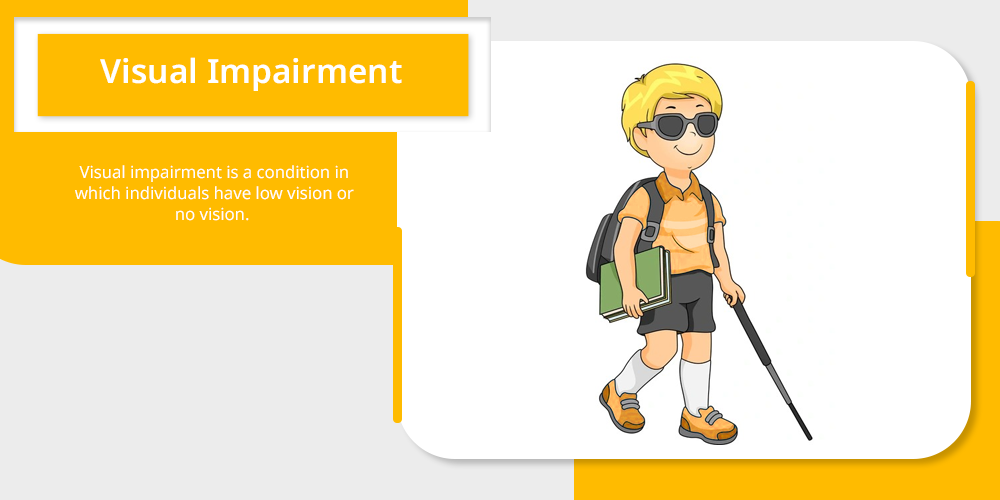
Visual impairment is a condition in which individuals have low vision or no vision. This is a serious disability that hampers students’ daily abilities, however, some children with such impairment have partial sight and are considered as visual lackers.
There are various special schools that offer students braille learning programs, which help them to complete their education and offer future opportunities
5. Deaf Blindness
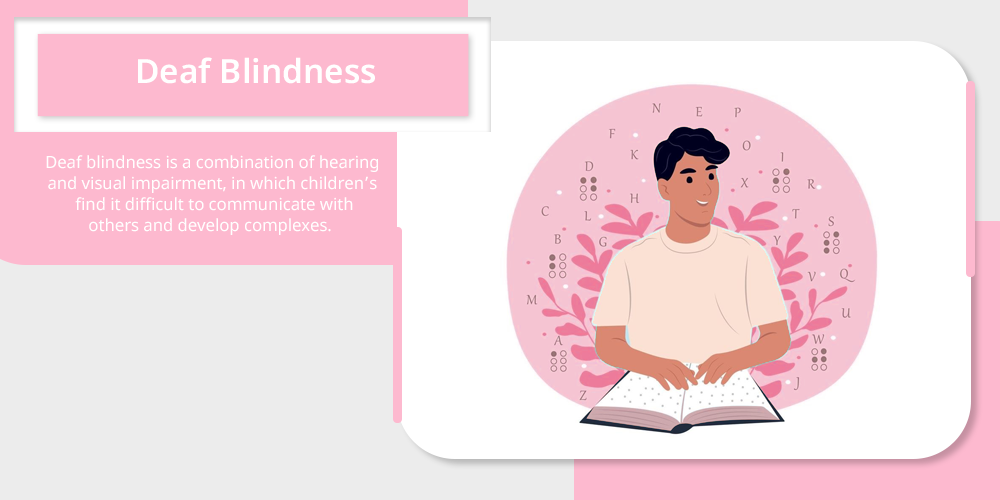
Deaf blindness is a combination of hearing and visual impairment, in which children’s find it difficult to communicate with others and develop complexes. This causes extreme challenges for them in their daily activities and academics.
There are various special education schools that mostly focus on hearing and visual challenges by using braille learning. This helps children to study as per their comfortability and enhances their educational experience.
6. Social Disorder

Social disorders are a type of disorder that hampers the learning ability and social skills of students. It is a psychological problem in which students find it difficult to socialise with others.
This disability hampers children’s thinking, reading, writing, communication and listening processes, which cause them to perform poorly in their academics as well as in their daily activities.
Social disorder occurs due to various reasons such as environmental problems, family problems, genetics, physical challenges and so on.
7. Emotional Disturbance
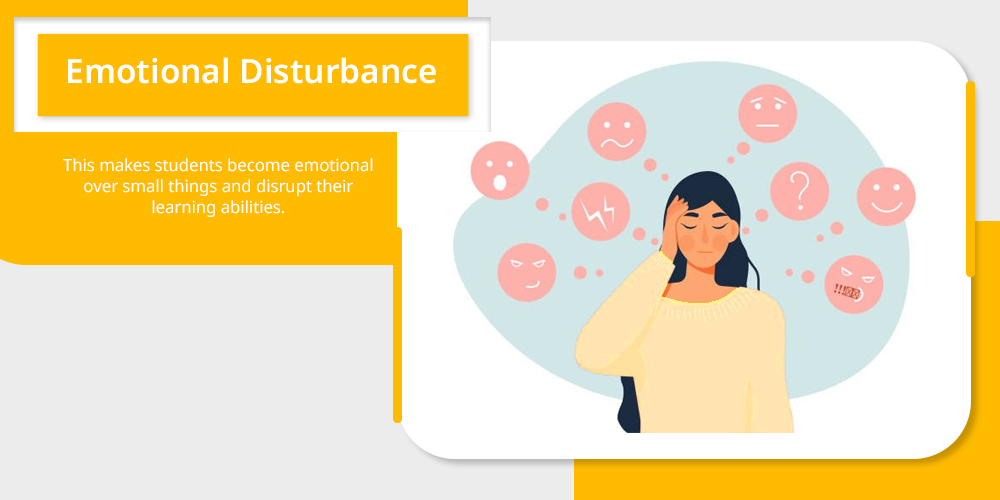
This disability occurs due to behavioural changes such as emotional factors. This makes students become emotional over small things and disrupt their learning abilities. This affects cognitive development, including children’s memory problems, as well as hamper problem-solving skills.
Due to these disabilities, students are unable to cope with stress and anxiety, which hinders their performance and academic success.
8. Intellectual Disability
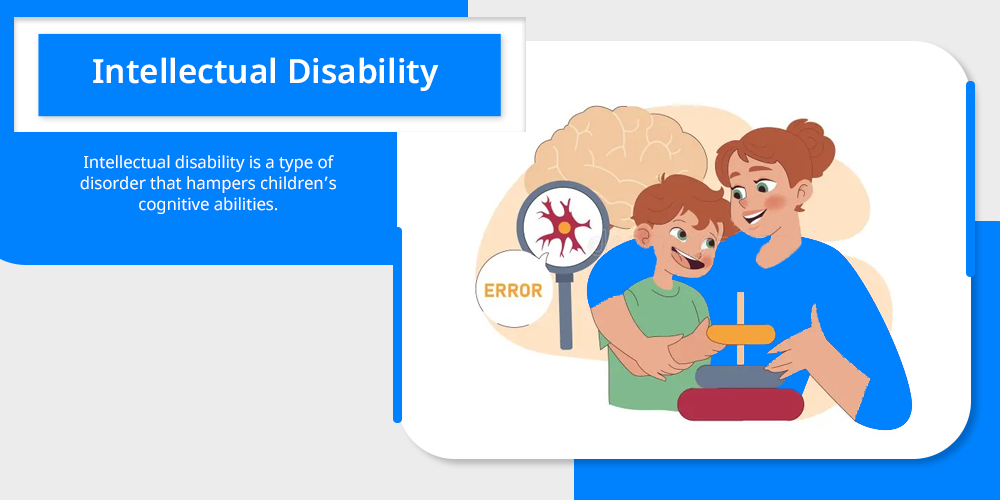
Intellectual disability is a type of disorder that hampers children’s cognitive abilities. Children who have intellectual disabilities have a lower Intelligence Quotient (IQ).
Students with less than 70 IQ are considered to have intellectual disorders, which affects their daily performance in terms of academics and personal life. One most common intellectual disability is Down Syndrome and Fragile X.
9. Multiple Disability
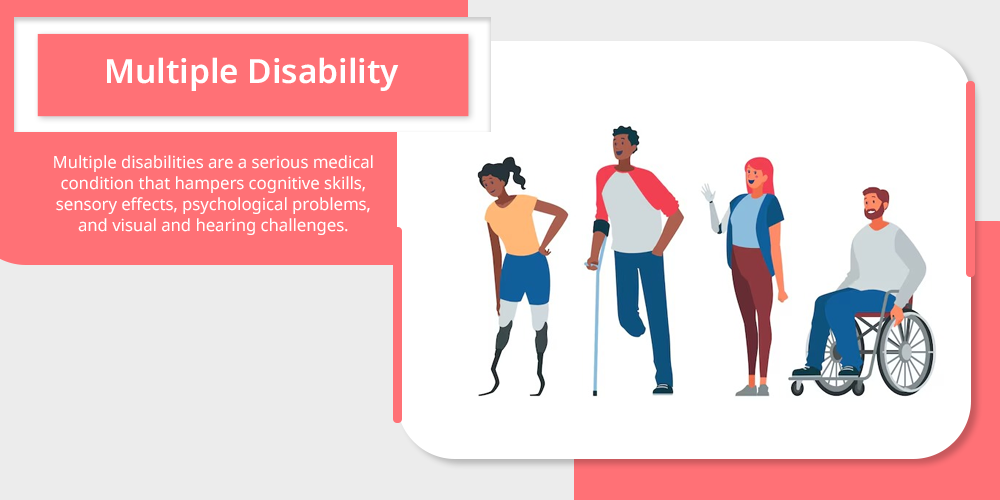
Multiple disabilities are a serious medical condition that hampers cognitive skills, sensory effects, psychological problems, and visual and hearing challenges. These types of disabilities cause serious issues to children that affect their education and daily life.
Children with multiple disabilities are mostly dependent on someone and electronic gadgets, such as wheelchairs, communication devices or computers.
10. Language Disorder
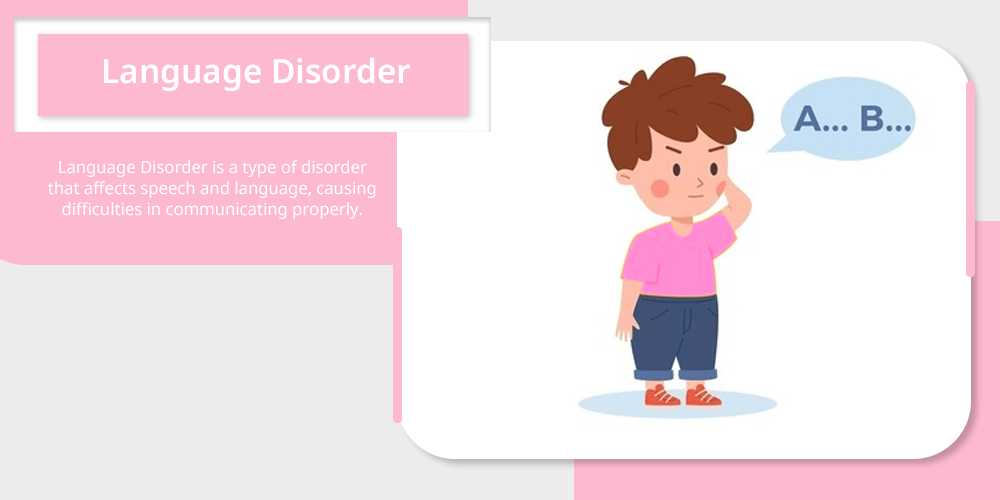
Language Disorder is a type of disorder that affects speech and language, causing difficulties in communicating properly. Due to language disorder, students find it difficult to talk as they are unable to produce the dialects and make speeches.
Language disorder hampers communication skills due to stuttering, impaired articulation and low pitch voice.
11. Development Delay
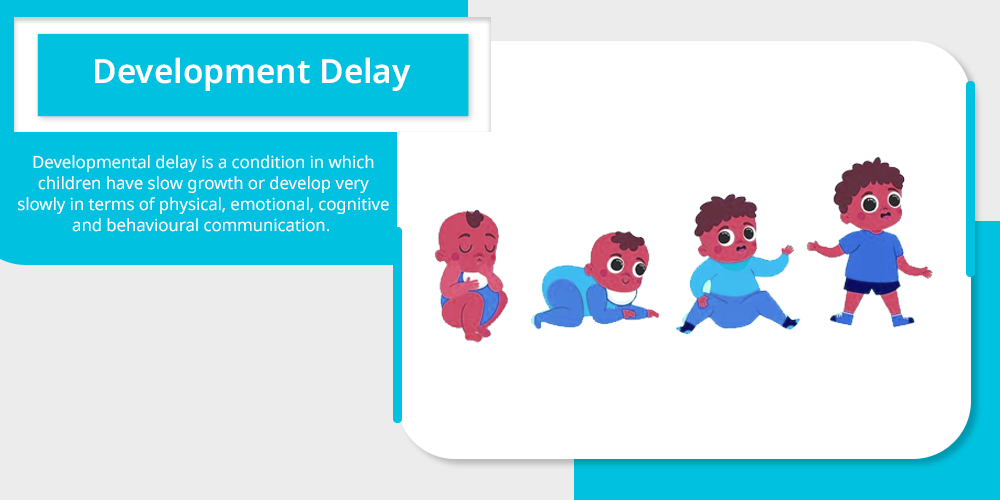
Developmental delay is a condition in which children have slow growth or develop very slowly in terms of physical, emotional, cognitive and behavioural communication.
A child must acquire most of the essential skills by age nine, such as physical, social emotional learning and behavioural. Due to the delay in development, children find it difficult to adjust to others and communicate effectively.
12. Orthopaedic Impairment
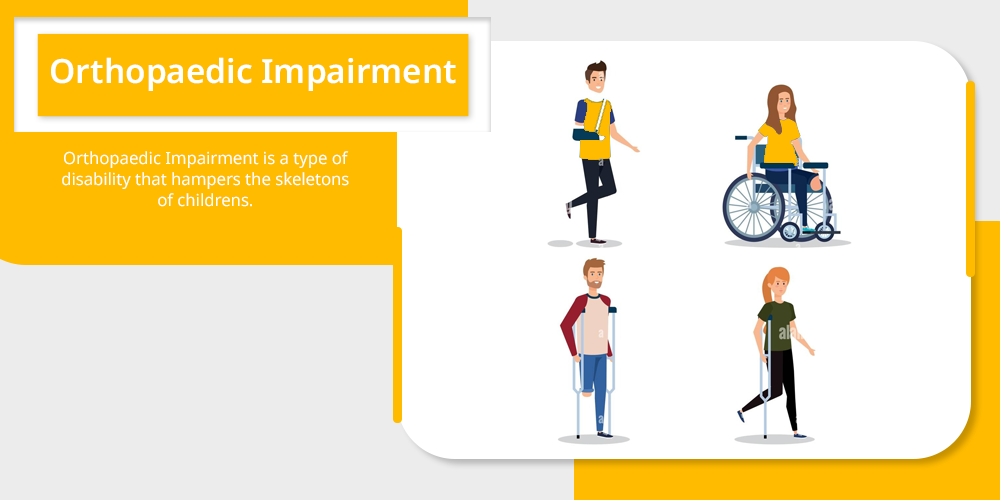
Orthopaedic Impairment is a type of disability that hampers the skeletons of childrens. It is a physical disability that affects the musculoskeletal system.
This disability can occur at any age, due to various reasons such as accidents, genetics, physical challenges and so on. These disabilities affect daily activities and cause long-term effects, due to which they need special education.
13. Noncategorical Early Childhood
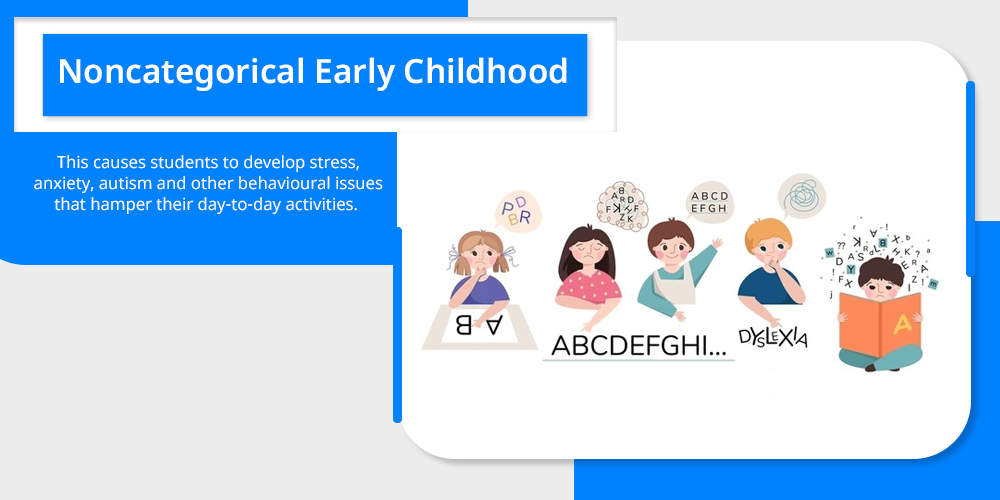
Noncategorical early childhood can be understood as a student having trouble with intellectual disability, emotional disturbance, specific learning disability or autism and is between the ages of three and five.
This causes students to develop stress, anxiety, autism and other behavioural issues that hamper their day-to-day activities.
Benefits of Special Education
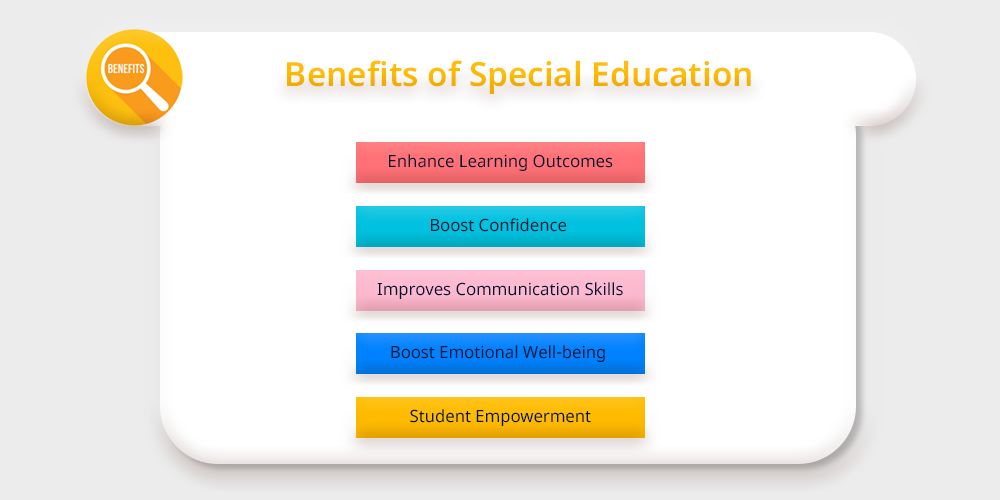
Special education is essential as it helps students to provide individualised learning and enhance their learning outcomes. Special education aids in encouraging academic performance as well as enhancing social skills and confidence.
Even AI in special education also helps in enhancing students’ learning opportunities, and provides them with the benefits of virtual education for students. Here are the benefits of special education mentioned below.
1. Enhance Learning Outcomes
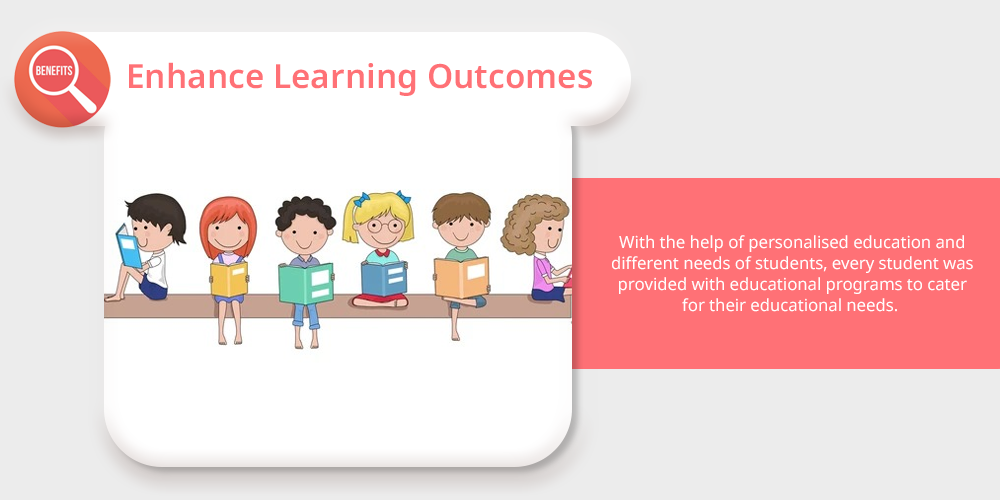
Special education helps in building learning opportunities for students irrespective of their challenges. With the help of personalised education and different needs of students, every student was provided with educational programs to cater for their educational needs.
In special education, students were provided education with the help of technology and interactive classes which helps in bridging the gap between students.
2. Boost Confidence
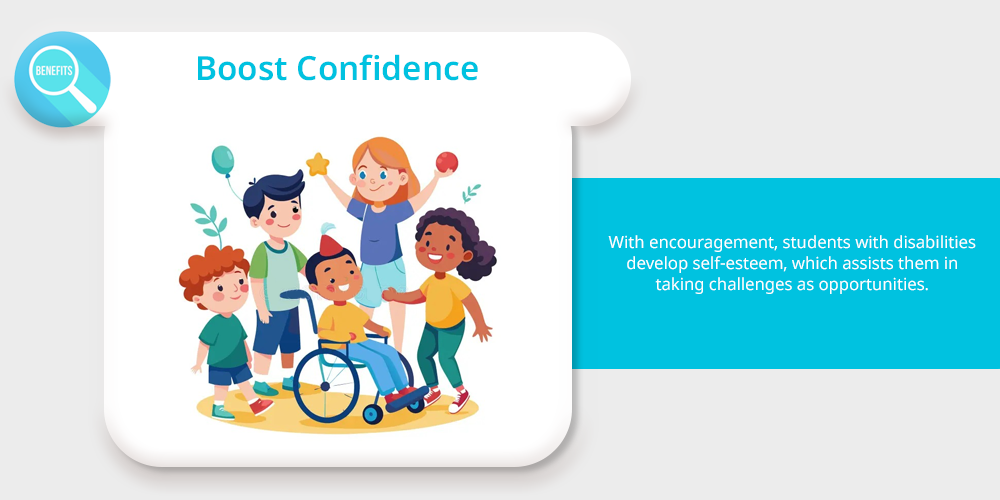
Special education helps students develop confidence. With the help of structured learning, students develop comfort and a sense of empathy. This enables them to socialize with others and enhance their positive thinking, which makes them develop metacognitive skills.
With encouragement, students with disabilities develop self-esteem, which assists them in taking challenges as opportunities.
3. Improves Communication Skills
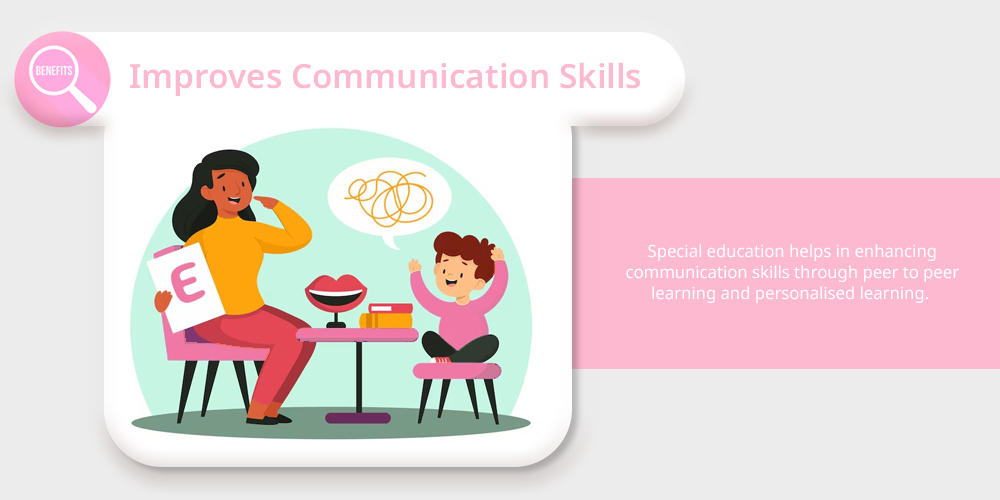
Special education helps in enhancing communication skills through peer to peer learning and personalised learning. Support and guidance help in reducing frustration and separation for disabled children.
Even through therapy and proper developmental classes, students develop language skills and enhance cognitive skills as well.
4. Boost Emotional Well-being
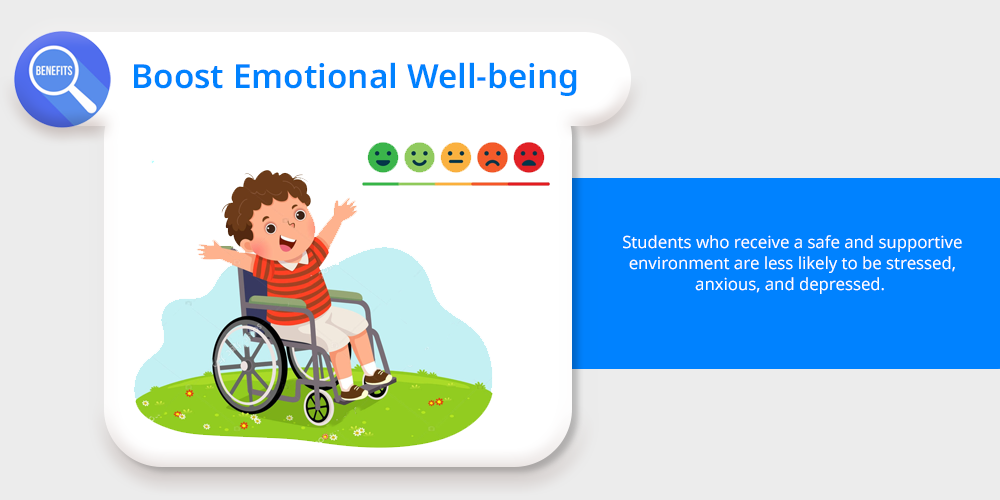
Special education assists in developing emotional well-being in students. Students who receive a safe and supportive environment are less likely to be stressed, anxious, and depressed.
Special education helps in enhancing self-esteem, which aids in enhancing the academic performance of students.
5. Student Empowerment
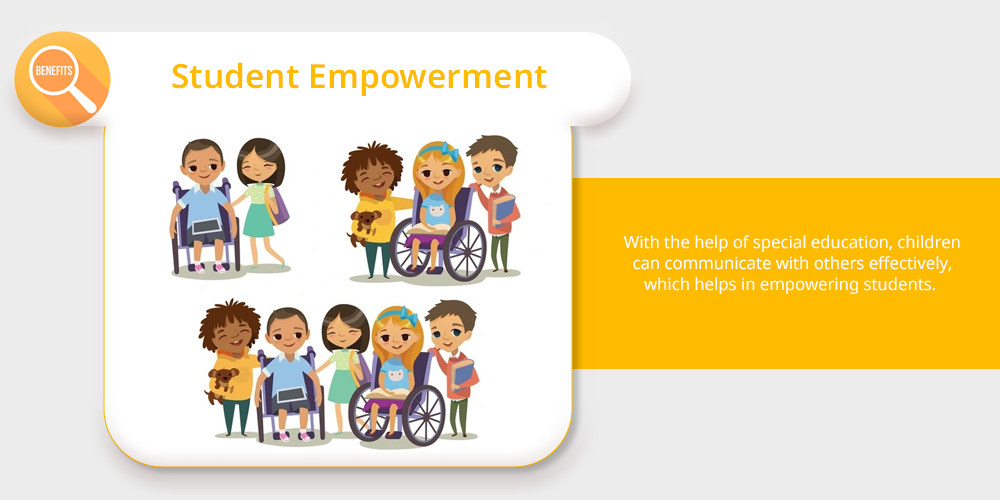
With the help of special education, children can communicate with others effectively, which helps in empowering students.
Special education helps in developing sympathy among students, which allows them to understand the feelings of others and assist them in understanding each other’s emotions.
Challenges of Implementing Special Education with Solutions
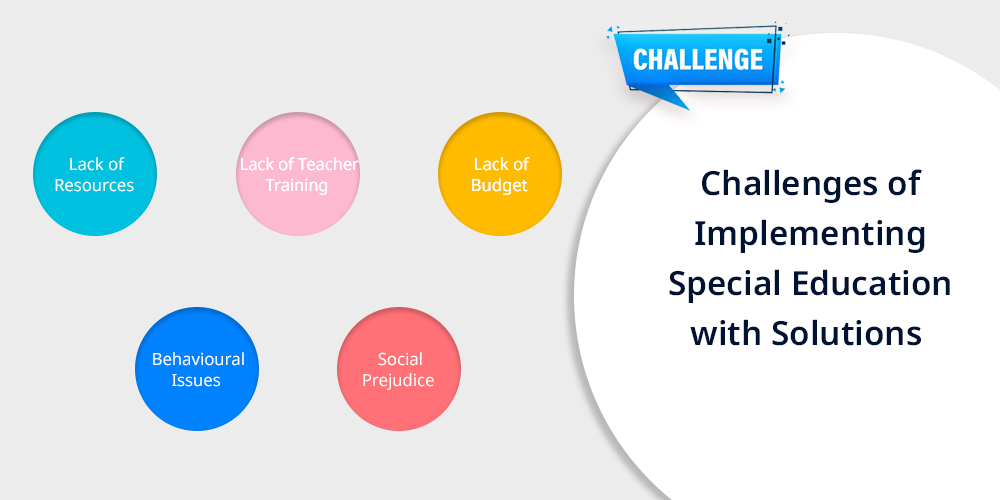
Special education has lots of benefits that allow students to indulge in education without any hindrances. Through implementing inclusive education, students of different backgrounds are welcomed to participate in teaching processes.
However, along with so many benefits, special education still faces so many challenges. These challenges cause this initiative to be implemented with full potential. Below, you can check the challenges of implementing special education.
1. Lack of Resources
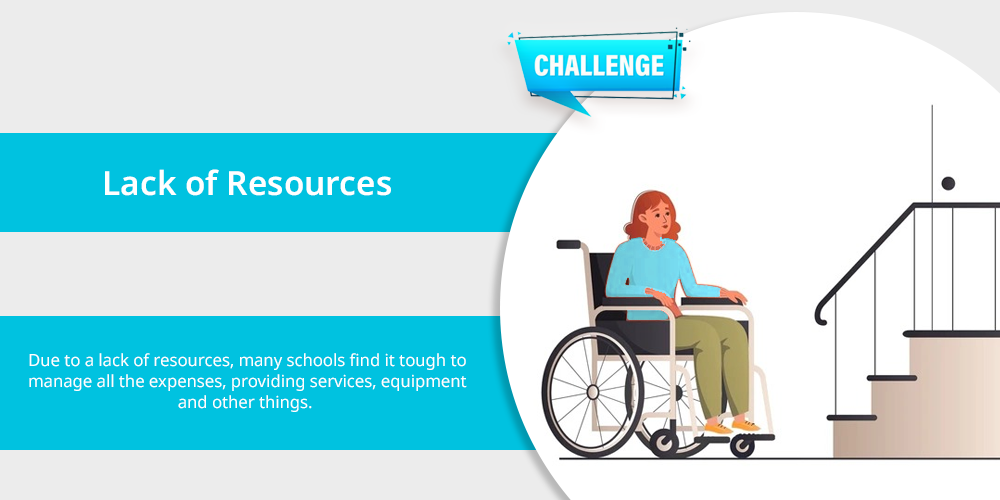
Inadequate resources are one of the major challenges of special education. Due to a lack of resources, many schools find it tough to manage all the expenses, providing services, equipment and other things.
Due to a lack of resources, students with disabilities were not enrolled in schools, which made special education less effective.
Solutions for Lack of Resources in Special Education
The problem of a lack of resources among special children can be mitigated by implementing new strategies and online learning. 21K school, an online school, also offers personalised education and provides effective resources to students with disabilities.
2. Lack of Teacher Training
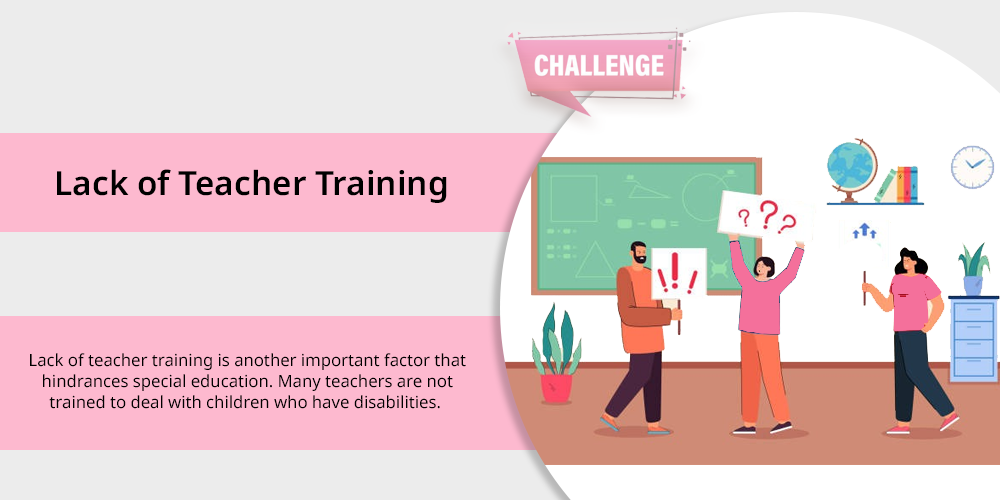
Lack of teacher training is another important factor that hindrances special education. Many teachers are not trained to deal with children who have disabilities.
As physically challenged students are more sensitive, they require special care, and many teachers do not know how to deal with such children. For this reason, it makes special education ineffective and challenging to implement in schools.
Solutions to the Lack of Teacher Training in Special Education
This problem is a very common problem due to which many students are unable to achieve effective learning. To avoid this problem, teachers also have to stay updated with the current trends and they need regular training about children’s pedagogy.
3. Lack of Budget
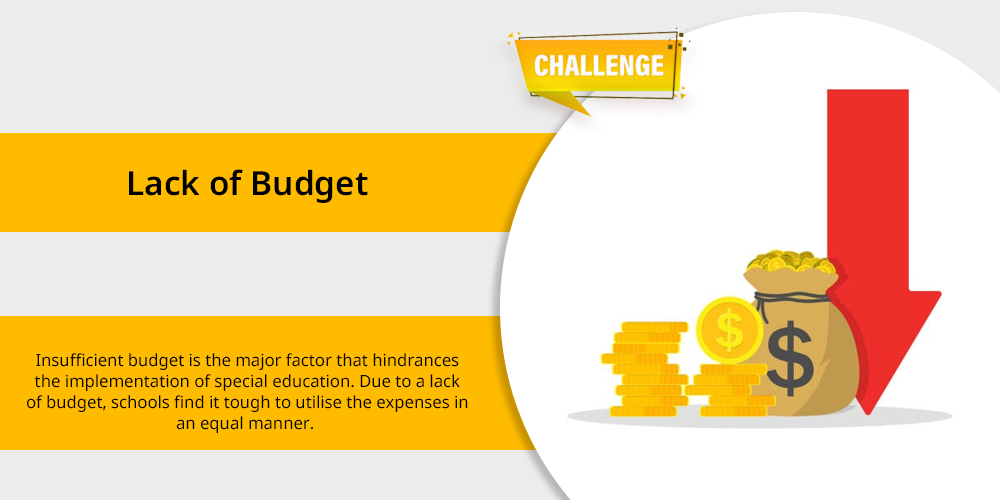
Insufficient budget is the major factor that hindrances the implementation of special education. Due to a lack of budget, schools find it tough to utilise the expenses in an equal manner.
Due to budget constraints, it becomes tough for schools to hire teachers for special education and provide them with salaries.
Solution to Lack of Budget in Special Education
Budgeting is the problem is the main problem that hindrances special education. However, this problem can be mitigated by proper utilisation of government funds, support from NGOs and trusts.
Several strategies, such as tracking income and expenses, prioritising spending according to strategic objectives and setting realistic goals, also help in avoiding this problem.
4. Behavioural Issues
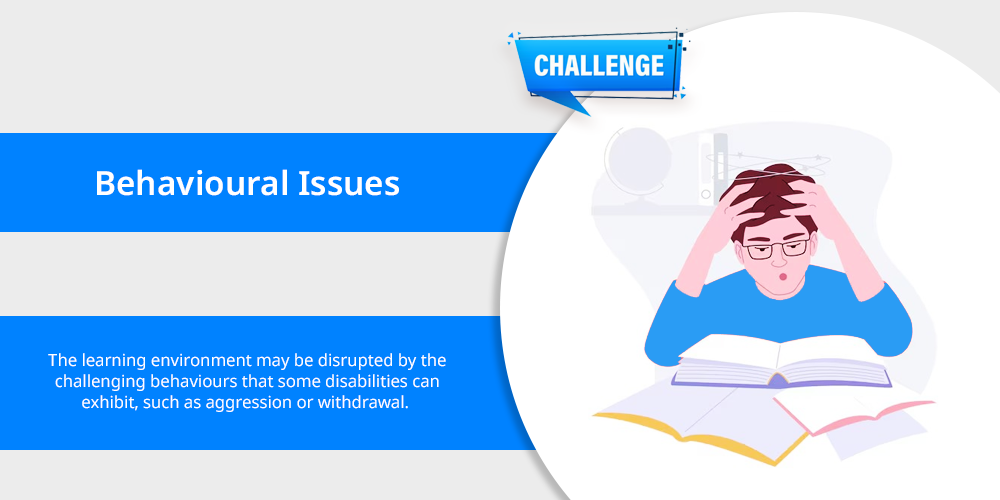
Behavioural issues are also a major factor that affects special education. The learning environment may be disrupted by the challenging behaviours that some disabilities can exhibit, such as aggression or withdrawal.
For this reason of behaviour problems in schools, it becomes tough to maintain the class speed and teach students effectively.
Solutions for Behavioural Issues in Special Education
Behavioural challenges are the most common challenges faced by teachers during special education. However, online education helps in mitigating this problem by implementing new strategies of education.
Even 21K schools also teach students with the latest modules that allow children with special needs to study as per their comfort level.
5. Social Prejudice
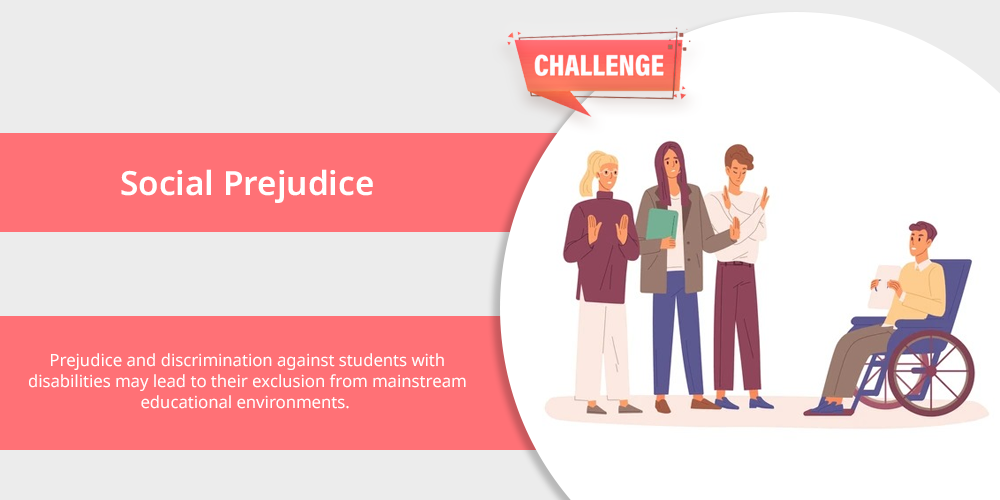
Prejudice and discrimination against students with disabilities may lead to their exclusion from mainstream educational environments.
Due to negative attitudes, many students find it tough to connect with others and develop negative attitudes towards others. This challenge causes hindrances in the implementation of special education.
Solution for Tackling Social Prejudice in Special Education
Social Prejudice can be avoided if schools use perfect strategies of collaborative learning and peer to peer learning. Through cooperative strategies, students develop social skills and develop sympathy, trust and respect for others.
Final Thoughts
In order to give students with different disabilities individualised learning opportunities and the resources and support they need to succeed academically and socially, special education is essential.
Even though special education has many advantages like better learning methods, better communication skills and increased confidence, its implementation is fraught with difficulties such as a lack of funding, inadequate teacher preparation and social prejudice.
For all students, regardless of ability, to thrive and realise their full potential in an inclusive learning environment, these issues must be resolved. Societies can strive toward a more equal educational system that gives every child more power by encouraging empathy and support.

